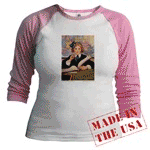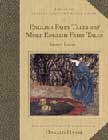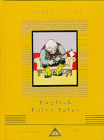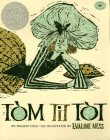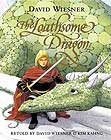| Introduction | Annotated Tales | eBooks | Bookstore | Illustration Gallery | Discussion Board | Blog |
 |
|
|
Dedication and Preface Return to European Folk and Fairy Tales
by Joseph Jacobs PEGGY, AND MADGE, AND PEARL, AND MAGGIE, AND MARGUERITE, AND PEGGOTTY, AND MEG, AND MARJORY, AND DAISY, AND PEGG, AND MARGARET HAYS (How many granddaughters does that make?) MY DEAR LITTLE PEGGY: Many, many, many years ago I wrote a book for your Mummey when she was my little May telling the fairy tales which the little boys and girls of England used to hear from their mummeys, who had heard them from their mummeys years and years and years before. My friend Mr. Batten made such pretty pictures for it but of course you know the book it has "Tom, Tit, Tot " and [ The little old woman that went to market," and all those tales you like. Now I have been making a fairy-tale book for your own self, and here it is. This time I have told again the fairy tales that all the mummeys of Europe have been telling their little Peggy s, Oh for ever so many years! They must have liked them because they have spread from Germany to Russia, from Italy to France, from Holland to Scotland, and from England to Norway, and from every country in Europe that you will read about in your geography to every other one. Mr. Batten, who made the pictures for your mummey's book, has made some more for yours isn't it good of him when he has never seen you? Though this book is your very, very own, you will not mind if other little girls and boys also get copies of it from their mummeys and papas and ganmas and ganpas, for when you meet some of them you will, all of you, have a number of common friends like " The Cinder-Maid," or " The Earl of Cattenborough," or "The Master-Maid," and you can talk to one another about them so that you are old friends at once. Oh, won't that be nice? And when one of these days you go over the Great Sea, in whatever land you go, you will find girls and boys, as well as grown-ups, who will know all of these tales, even if they have different names. Won't that be nice too ? And when you tell your new friends here or abroad of these stories that you and they will know so well, do not forget to tell them that you have a book, all of your very own, which was made up specially for you of these old, old stories by your old, old GANPA. P.S. Do you hear me calling as I always do, "Peggy, Peggy"? Then you must answer as usual, "Ganpa, Ganpa." PREFACE EVER since almost exactly a hundred years ago the Grimms produced their Fairy Tale Book, folk-lorists have been engaged in making similar collections for all the other countries of Europe, outside Germany, till there is scarcely a nook or a corner in the whole continent that has not been ransacked for these products of the popular fancy. The Grimms themselves and most of their followers have pointed out the simi- larity or, one might even say, the identity of plot and incident of many of these tales throughout the European Folk-Lore field. Von Hahn, when collecting the Greek and Albanian Fairy Tales in 1864, brought together these common "formulae" of the European Folk-Tale. These were supple- mented by Mr. S. Baring-Gould in 1868, and I myself in 1892 contributed an even fuller list to the Hand Book of Folk-Lore. Most, if not all of these formulae, have been found in all the countries of Europe where folk-tales have been collected. In 1893 Miss M. Roalfe Cox brought together, in a volume of the Folk-Lore Society, no less than 345 variants of "Cinderella" and kindred stories show- ing how wide-spread this particular formula was throughout Europe and how substantially identical the various incidents as reproduced in each particular country. It has occurred to me that it would be of great interest and, for folk-lore purposes, of no little importance, to bring together these common Folk-Tales of Europe, retold in such a way as to bring out the original form from which all the variants were derived. I am, of course, aware of the difficulty and hazardous nature of such a proceeding; yet it is fundamentally the same as that by which scholars are accustomed to restore the t/r-text from the variants of different families of MSS. and still more similar to the process by which Higher Critics attempt to restore the original narratives of Holy Writ. Every one who has had to tell fairy tales to children will appreciate the conservative tendencies of the child mind; every time you vary an incident the children will cry out, "That was not the way you told us before." The Folk-Tale collections can therefore be assumed to retain the original readings with as much fidelity as most MSS. That there was such an original rendering eminating from a single folk artist no serious student of Miss Cox's volume can well doubt. When one finds practically the same "tags" of verse in such different dialects as Danish and Romaic, German and Italian, one cannot imagine that these sprang up independently in Denmark, Greece, Germany, and Florence. The same phenomenon is shown in another field of Folk- Lore where, as the late Mr. Newell showed, the same rhymes are used to brighten up the same children's games in Barcelona and in Boston; one cannot imagine them springing up independently in both places. So, too, when the same incidents of a fairy tale follow in the same artistic concatena- tion in Scotland, and in Sicily, in Brittany, and in Albania, one cannot but assume that the original form of the story was hit upon by one definite literary artist among the folk. What I have attempted to do in this book is to restore the original form, which by a sort of international selection has spread throughout all the European folks. But while I have attempted thus to restore the original substance of the European Folk-Tales, I have ever had in mind that the particular form in which they are to appear is to attract English-speaking children. I have, therefore, utilized the experience I had some years ago in collecting and retelling the Fairy Tales of the English Folk-Lore field (English Fairy Tales, More English Fairy Tales), in order to tell these new tales in the way which English-speaking children have abundantly shown they enjoy. In other words, while the plot and incidents are "common form' 3 throughout Europe, the manner in which I have told the stories is, so far as I have been able to imitate it, that of the English story-teller. I have indeed been conscious throughout of my audience of little ones and of the reverence due to them. Whenever an original incident, so far as I could penetrate to it, seemed to me too crudely primitive for the children of the present day, I have had no scruples in modifying or mollifying it, drawing attention to such Bowdlerization in the somewhat elaborate notes at the end of the volume, which I trust will be found of interest and of use to the serious student of the Folk-Tale. It must, of course, be understood that the tales I now give are only those found practically identical in all European countries. Besides these there are others which are peculiar to each of the countries or only found in areas covered by cognate languages like the Celtic or the Scandinavian. Of these I have already covered the English and the Celtic fields, and may, one of these days, extend my col- lections to the French and Scandinavian or the Slavonic fields. Meanwhile it may be assumed that the stories that have pleased all European children for so long a time are, by a sort of international selection, best fitted to survive, and that the Fairy Tales that follow are the choicest gems in the Fairy Tale field. I can only express the hope that I have succeeded in placing them in an appropriate setting. It remains only to thank those of my colleagues and friends who have aided in various ways in the preparation of this volume, though of course their co-operation does not, in the slightest, imply responsibility for or approval of the method of treatment I have applied to the old, old stories. Miss Roalfe Cox was good enough to look over my reconstruction of "Cinderella" and suggest altera- tions in it. Prof. Crane gave me permission to utilize the version of the "Dancing Water," in his Italian Popular Tales. Sir James G. Frazer looked through my restoration of the "Language of Animals" which was suggested by him many years ago; and Mr. E. S. Hartland criticized the Swan- Maiden story. I have also to thank by old friend and publisher, Dr. G. H. Putnam, for the personal interest he has taken in the progress of the book. J.J. Jacobs, Joseph, ed. European Folk and Fairy Tales. New York: G. P Putnam's Sons, 1916. Return to European Folk and Fairy Tales by Joseph Jacobs |
|
| ©Heidi
Anne Heiner, SurLaLune Fairy Tales E-mail: heidi@surlalunefairytales.com Page created 4/15/05; Last updated 10/22/07 www.surlalunefairytales.com |
